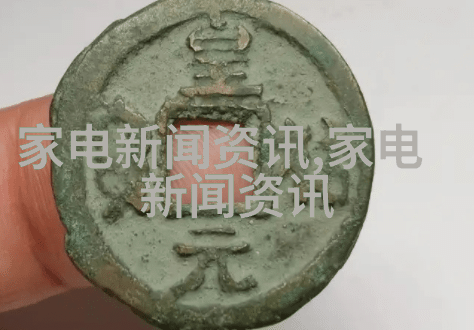在全球化的大背景下,药物安全性和质量控制成为了医疗行业的核心议题。为了确保药物生产过程中的每一个环节都能达到高标准,国际上普遍采用了GMP(Good Manufacturing Practice, 良好制造实践)的指导原则。GMP不仅对整个生产流程进行了严格的规范,也对相关设备提出了具体要求。在这篇文章中,我们将深入探讨如何通过实施GMP规范来实现从原材料到成品的全过程追踪机制,以及它是如何影响制药设备设计和操作的。

GMP与其对制药设备要求
1. 制定规程

质量管理系统:在执行GMP之前,必须建立一套完整、可操作的质量管理体系,这包括文档控制、批准流程、培训记录等。

清洁和消毒:所有涉及产品接触或储存的地方必须保持清洁,并且按照规定进行消毒。
设备校准:所有测量工具和关键控件都必须定期校准以保证它们能够提供精确数据。

2. 生产环境

隔离区划分:根据产品特性设置合适的隔离区,以防止交叉污染。
空气过滤与压力差控制:对于敏感区域,如充填室,需要使用有效空气过滤系统并维持负压条件。
3. 设备设计与验证
耐腐蚀性材料选择:用于接触活性医药物质或含有活性医药物质介质的地方应选用耐腐蚀性的材料。
易于清洁设计:所有表面应该尽可能平滑,便于清洗,并且容易去除残留物。
实施全过程追踪机制
1. 追溯策略
由于病例如天花疫苗剂量不足事件显示出随着时间推移,对源头识别变得越发重要,因此GMP强调建立健全追溯体系。这包括记录每个步骤以及所使用组件,从原料采购开始直至最终产品发放结束。
2. 数据记录与审计程序
要确保数据完整无误,每个处理步骤都需详细记录。同时,对于关键操作还需设立审计计划,以便监控遵守标准情况及时发现问题并采取措施修正。
3. 维护与更新制度
为了保证设施稳定运行,一套维护计划应当被实施,其中包括定期检查、维修以及技术升级以适应不断发展的需求。
Gmp对制药设备选择与配置影响分析
在满足上述要求的情况下,企业在选择及配置各类设备时会更加谨慎,他们会考虑以下几个方面:
确保新购置或安装替换旧有的设备符合最新版本的GMP指南。
对现有设施进行评估,如果存在缺陷,将提出改进方案以符合当前标准。
在购买新型号之前,要先了解该模型是否已被其他公司成功应用,并取得相应认证证书。
考虑不同类型生产线之间共享资源的问题,比如共享包装或者灌装线,不同产品间不会产生交叉污染风险,但也要注意分开存储避免混淆造成错误使用的情况发生。
5.gmp认证流程中关键审核要素:
设备安装后测试结果是否符合预期?
是否已经完成必要的手续,如用户手册编写、培训员工等?
6.gmp合规性的持续监管:
定期进行自我检查来确保继续遵循gmp指南;
及时响应内部外部审查团队关于gmp合规性的反馈;
7.Good Manufacturing Practice (gmp) 对当今新的创新趋势:
如自动化、高级清洁设计、新型灭菌技术等,为提高效率降低成本,同时减少人为失误提供支持;
8.Good Manufacturing Practices (gmps) 应用到的主要领域:
包括但不限于pharmaceuticals, vaccines, biotechnology products and medical devices.
9.The gmps system: A tool for the pharmaceutical industry to ensure product quality:
10.In conclusion,
the importance of a robust Good Manufacturing Practices program cannot be overstated in ensuring the safety and efficacy of pharmaceutical products from raw materials to final product delivery.
By following these guidelines and continuously monitoring and improving processes, manufacturers can maintain compliance with global regulations while also driving innovation in their facilities.
In an era where healthcare is becoming increasingly important worldwide, it is crucial that we prioritize quality control measures such as GMPs to protect public health and well-being.
With ongoing advancements in technology and manufacturing techniques,
we can expect even greater strides forward in adhering to these standards while simultaneously reducing costs through efficiency improvements.
11.Finally,
it's essential for companies operating within this sector not only adhere but also actively contribute towards shaping the future of drug production by advocating for better practices at all levels – from supplier management to facility design – throughout every stage of the process.
12.The implementation of good manufacturing practice principles helps ensure that each component meets specific requirements before being used during production or packaging operations which prevents contamination risk factors.
13.By combining rigorous testing protocols with a focus on environmental sustainability,
14.the future outlook remains bright for both businesses seeking certifications under strict regulatory frameworks as well as those looking into investing time & resources into developing novel solutions tailored specifically towards addressing current challenges faced by pharma industry professionals working under these guidelines today;



